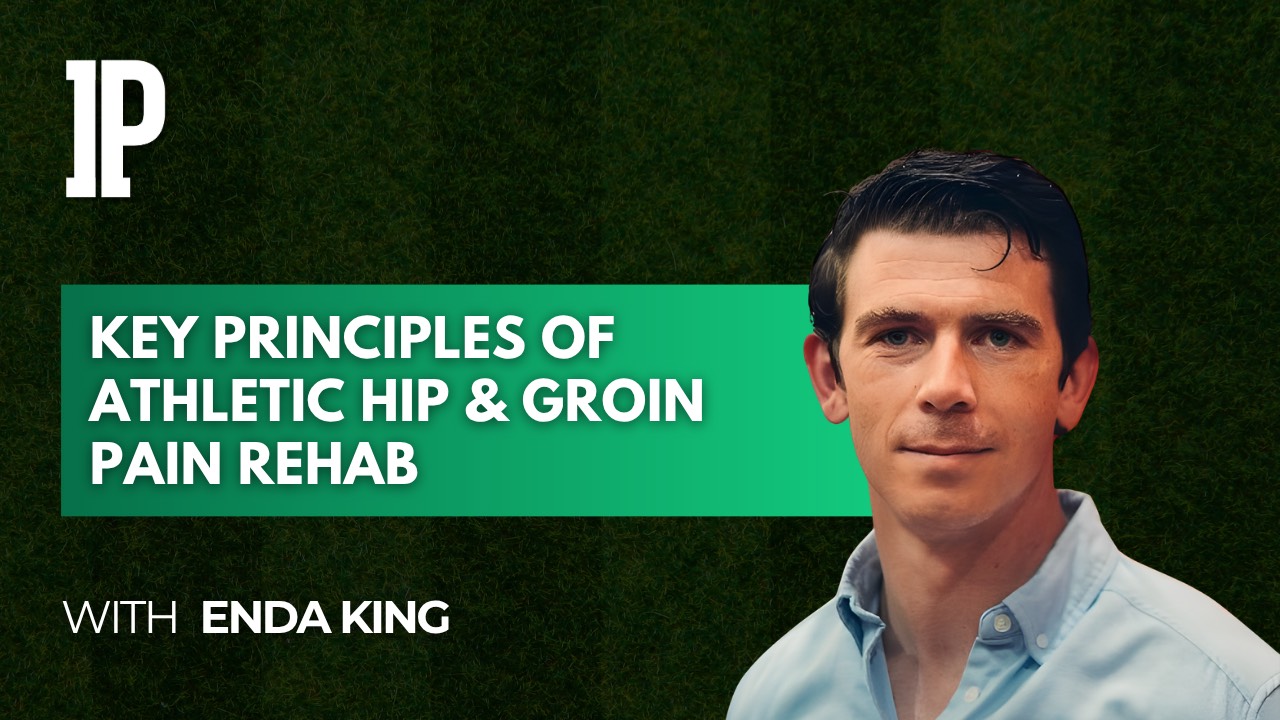Dr Enda King - Key Principles of Athletic Hip & Groin Pain Rehab
Oct 27, 2025
Episode 200: In this episode of the Inform Performance Podcast, Andy McDonald is joined by Dr. Enda King PhD MSc, one of the world’s leading sports physiotherapists and rehabilitation experts. Enda is currently the Aspetar Head of Elite Performance and Development.
Enda King PhD MSc has combined his roles as a sports physiotherapist, strength and conditioning coach, researcher, and educator through his work with individual athletes and elite teams across a spectrum of sports and disciplines.
Through role as Head of Performance, Sports Surgery Clinic, Dublin led the development and delivery of their ACL and Athletic Groin Pain clinical and research pathways and their Elite Athlete Program Rehabilitating catering for players from Premier League, NBA, NFL, NHL, Premiership Rugby, European Tour Golf, National Hunt Racing, AFL and UFC.
Over 40 peer review publications and book chapters in the management of Athletic Groin Pain, Biomechanical Analysis after ACL reconstruction and the role of biomechanics in rehabilitation and athletic performance.
As an educator, has presented at scientific conferences, courses and workshops and consulted for elite teams world wide, in particular in relation to ACL rehabilitation, Athletic Groin Pain and Chronic and Recurrent Lower limb muscle and tendon issues.
Topics Discussed:
-
Understanding Athletic Hip & Groin Pain
-
Challenges in Diagnosis and Management
-
Functional Assessments & Key Considerations
-
North Star Principles of Effective Rehabilitation
-
Rehab Insights from the Sportsmith Conference
Key Points:
-
Acute hip and groin injuries, including higher-grade avulsions, are effectively managed through both conservative and operative approaches. Practitioners excel in timelines for progressive reintroduction of training loads and strengthening acutely injured areas, ensuring a smooth recovery process.
-
Chronic groin pain management hinges on three pillars: load management, anatomical irritability, and pathomechanics. Effective load management allows symptoms to settle, while monitoring anatomical irritability ensures that rehabilitation strategies are working. Understanding pathomechanics is crucial for identifying the root causes of symptoms and preventing recurrence.
-
Diagnostic clarity is paramount in hip and groin pain management. Clinical tests, though sensitive, often lack specificity, making it challenging to pinpoint the exact source of pain. Radiology can present false positives, such as asymptomatic labral tears or bone edema, which can mislead practitioners and complicate treatment.
-
Rehabilitation should prioritize functional capacities and biomechanics, focusing on motor control around the hip joint and trunk, as well as strength and power in sports-specific activities. This comprehensive approach helps identify physical deficits and contributing factors, allowing for a more targeted and effective rehabilitation plan.
-
The principle of "begin with the end in mind" involves setting clear rehabilitation goals and milestones, such as achieving pain-free crossover tests and symmetrical hip internal rotation before advancing to more aggressive drills. This clarity ensures that all contributing factors are addressed throughout the rehabilitation process.
-
The concept of "you see what you look for and you look for what you know" highlights the need to broaden assessment criteria beyond strength to include motor control and biomechanical factors. This approach helps identify overlooked issues, such as glute-min control or iliopsoas weakness, that may hinder rehabilitation progress.
-
Effective rehabilitation requires continuous reassessment and adaptation. Practitioners should regularly evaluate whether interventions are producing the desired changes, adjusting the rehabilitation plan as needed to ensure exercises are appropriately challenging and targeted.
-
Collaboration and idea-sharing with other practitioners are essential for professional growth and development. Engaging with colleagues and learning from their experiences provide new insights and approaches to rehabilitation, ultimately improving patient outcomes.
-
High-volume centers like Aspetar offer unique learning opportunities, exposing practitioners to a wide range of cases, including complex ones. This environment fosters skill refinement and adaptation of rehabilitation approaches, promoting continuous improvement and innovation.
-
A holistic rehabilitation approach, considering both local and global factors, is crucial for addressing complex cases. Practitioners should be aware of potential compensations and biomechanical deficits on both affected and contralateral sides, ensuring all contributing factors are addressed for more effective outcomes.
Where you can find Dr. Enda King:
Sponsors
VALD Performance, makers of the Nordbord, Forceframe, ForeDecks and HumanTrak. VALD Performance systems are built with the high-performance practitioner in mind, translating traditionally lab-based technologies into engaging, quick, easy-to-use tools for daily testing, monitoring and training
Hytro: The world’s leading Blood Flow Restriction (BFR) wearable, designed to accelerate recovery and maximise athletic potential using Hytro BFR for Professional Sport.




